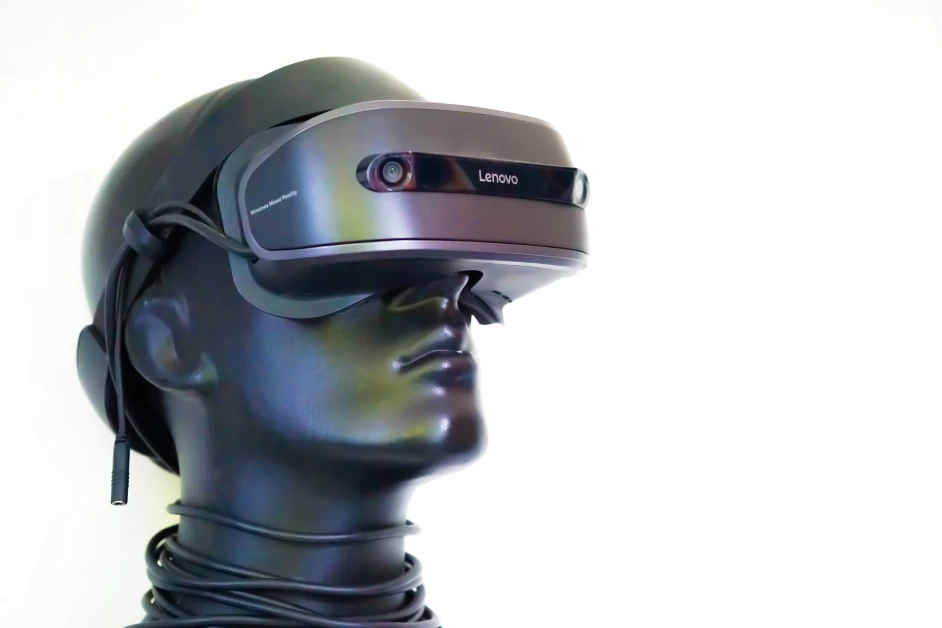Table of Contents
Introduction
Virtual Reality (VR) and Augmented Reality (AR) technologies are transforming the field of higher education Instructional Design. These innovative tools provide students with immersive and interactive experiences that enhance learning and engagement. VR creates computer-generated environments that simulate the real world, while AR overlays digital content onto the physical world. Both technologies offer unique benefits and opportunities for students to learn in ways that traditional instruction methods cannot replicate.
What Is Virtual Reality?
Virtual Reality is a technology that uses computer-generated environments to create a sense of presence and immersion. Users can experience VR through headsets or other devices that provide a fully immersive experience. In these virtual worlds, students can interact with objects and people, making learning more engaging and impactful. VR can be used across various educational applications, from scientific experiments to language immersion programs. It is especially effective in simulating real-life scenarios that are challenging or impossible to replicate in a traditional classroom setting.
What Is Augmented Reality?
Augmented Reality, on the other hand, overlays digital content onto the real world, creating an interactive and immersive learning experience. AR can be experienced through smartphones or other devices, where digital images or data are superimposed onto the physical environment. This technology enables students to receive real-time feedback, enhances engagement, and brings abstract concepts to life. By seamlessly integrating digital content into the real world, AR transforms the learning experience and makes it more interactive.
The Benefits Of VR And AR In Instructional Design
The use of VR and AR in higher education Instructional Design offers numerous benefits for students and instructors alike.
1. Immersive and Interactive Learning Experiences
VR and AR technologies provide students with immersive and interactive learning experiences. By creating simulations that replicate real-life scenarios, students can practice skills and learn from their mistakes in a safe and controlled environment. For example, medical students can practice surgical procedures in a simulated environment, allowing them to gain practical experience without the risk of harm. This hands-on approach to learning enhances student engagement and deepens their understanding of the subject matter.
2. Personalized Instruction
VR and AR technologies have the potential to personalize instruction for each student. These tools can track student progress and adjust the difficulty level or provide personalized feedback based on individual needs. By tailoring the learning experience to each student’s abilities and preferences, VR and AR can improve learning outcomes and help students achieve their full potential.
3. Access to Unique Experiences
VR and AR technologies provide access to experiences that may not be possible in traditional classroom settings. For example, VR can transport students to historical sites or natural environments that are difficult or impossible to visit in person. AR can bring objects or concepts to life, such as visualizing the structure of molecules or exploring the layers of the Earth’s crust. These experiences enhance students’ understanding and make learning more engaging and memorable.
4. Engaging Presentations and Gamification Elements
VR and AR offer instructors new ways to present content and engage students. These technologies can create interactive and engaging presentations that capture students’ attention and make learning fun. By incorporating gamification elements, such as leaderboards or achievements, instructors can motivate students to engage with course material and improve learning outcomes. This interactive approach to teaching fosters a sense of competition and collaboration among students, enhancing their overall learning experience.
Challenges To Implementing VR And AR In Instructional Design
While the benefits of VR and AR in Instructional Design are significant, there are several challenges that institutions must address when adopting these technologies.
1. Cost and Accessibility
One of the main challenges is the cost and accessibility of VR and AR technology. The equipment required, such as VR headsets, can be expensive, making it difficult for some institutions to implement these technologies on a large scale. However, as the technology becomes more common, costs are expected to decrease, making it more accessible to educational institutions.
2. Specialized Skills and Knowledge
Creating VR and AR content requires specialized skills and knowledge. Instructional Designers and educators must have a deep understanding of the technology and its potential applications to create effective and engaging learning experiences. Institutions must invest in training and development programs to equip their staff with the necessary skills to leverage these technologies effectively.
3. Accessibility for All Students
There is a risk that VR and AR technologies may not be accessible to all students, particularly those with special educational needs. For example, students with visual impairments may have difficulty using VR headsets, while students with hearing impairments may struggle with AR technologies that rely on audio cues. Institutions must ensure that they are providing accessible options for all students and are not creating a barrier to learning.
4. Technical Support and Infrastructure
Implementing VR and AR technologies requires adequate technical support and infrastructure. These technologies require significant bandwidth and processing power, which can strain institutional networks and systems. Additionally, technical issues may arise during implementation, requiring specialized support to troubleshoot and resolve problems. Institutions must invest in robust technical support systems to ensure a smooth implementation and ongoing maintenance of VR and AR technologies.
Applications Of VR And AR In Higher Education Instructional Design
VR and AR technologies have a wide range of applications in higher education. Here are some of the most promising applications:
1. Science and Engineering
VR and AR can provide students with opportunities to explore complex scientific concepts and theories in a hands-on way. For example, biology students can explore the structure of cells and molecules in a 3D environment, while engineering students can troubleshoot machinery in a simulated environment. These technologies make abstract concepts more tangible and enhance students’ understanding of the subject matter.
2. Medical Education
VR and AR technologies are particularly effective in medical education. They allow medical students to practice procedures and surgeries in a safe and controlled environment. These technologies can also enable students to explore the human body and understand its structures and systems more interactively. By providing realistic simulations, VR and AR enhance medical education and improve patient outcomes.
3. Language Learning
VR and AR can provide immersive language learning experiences. Students can practice their language skills in a simulated environment, such as ordering food in a restaurant or navigating a foreign city. These technologies create a context-rich learning environment that enhances language acquisition and fluency.
4. Historical and Cultural Education
VR and AR can provide access to historical and cultural sites that may be difficult or impossible to visit in person. Students can explore ancient ruins or cultural landmarks in a way that brings history and culture to life. These technologies enhance students’ understanding of historical events and cultural contexts.
5. Professional Training
VR and AR technologies can be used to train professionals in various industries, such as aviation or construction. Simulated environments can replicate real-life scenarios, allowing professionals to practice skills and procedures safely and in a controlled environment. These technologies enhance training effectiveness and improve job performance.
Conclusion
The use of VR and AR technologies in higher education Instructional Design offers significant benefits to both students and instructors. These technologies provide immersive and interactive learning experiences, personalized instruction, and access to unique experiences. Despite the challenges of cost, accessibility, specialized skills, and technical support, institutions should consider the numerous benefits and explore ways to incorporate VR and AR into their teaching practices. As technology continues to evolve, VR and AR will become increasingly important tools in the future of higher education.







